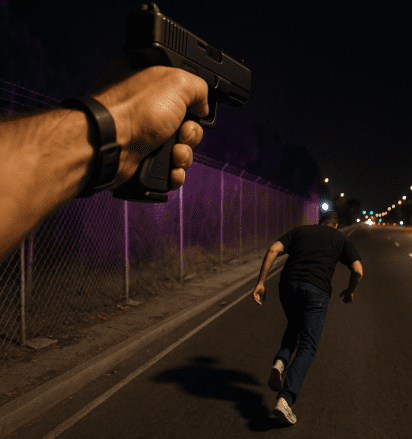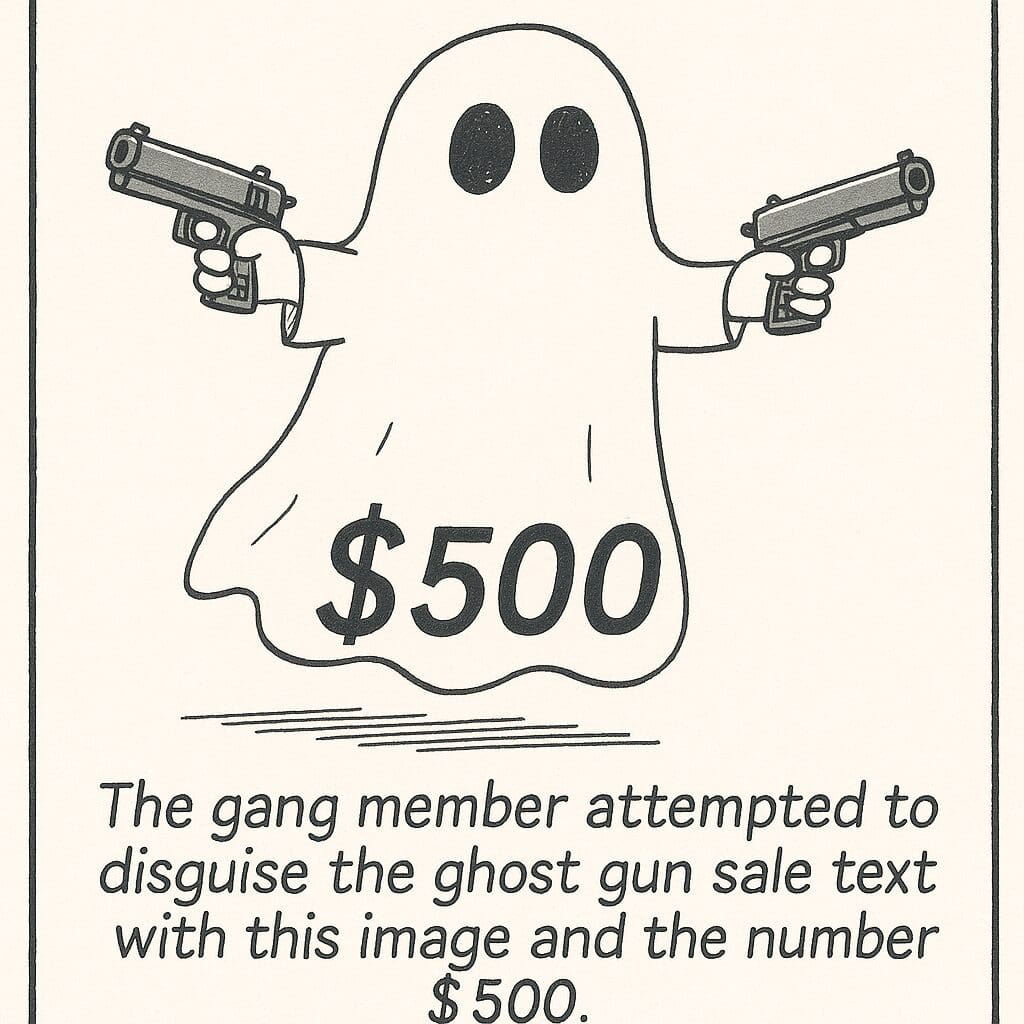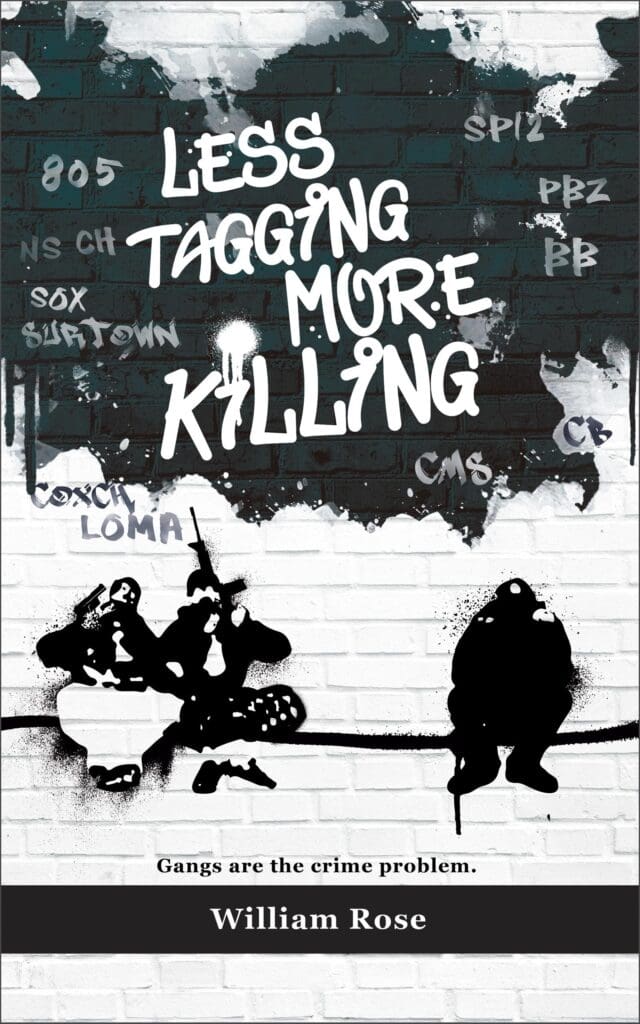Gangs and Ghost Guns: The Deadly Intersection of the Loma Flats Gang and Law Enforcement
August 27, 2025

The connection between gangs and ghost guns was a growing problem. Across the U.S., criminal street gangs exploited regulatory gaps—taking advantage of untraceable, homemade weapons known as ghost guns. Beginning in the early 2000’s the Do it Yourself (DIY) business model for firearms enthusiasts gradually grew and become widely available. Around 2013–2014, companies began selling “80% lower” receivers and complete build kits online to the general public. These untraceable weapons (ghost guns), lacking serial numbers and sold as DIY kits, posed growing challenges to public safety, investigation, and prosecution.
The Fatal Ventura Shooting: A Case that Laid Bare the Threat

In Ventura County, a police pursuit finally ended when a Loma Flats gang member fled on foot after a spike strip disabled his vehicle. Several prior felony convictions prohibited the gang member from owning firearms. The Ventura Police Department released body-camera footage showing the suspect turning and firing at officers before officers fatally shot him. The weapon recovered? A ghost gun—obliterated serial number which was difficult to trace—jeopardizing every conventional investigative step in public safety enforcement.
Further investigation revealed a fellow gang member was ordering ghost gun parts online, assembling them, and selling the “ghost guns” within the gang. That sparked a federal search warrant for the supplier’s residence—drawing a direct line between gangs and ghost guns.
Loma Flats Chiques Gang: A Case Study in Gang Firepower

Loma Flats Chiques is an example of how dangerous gangs become when armed with ghost guns. The Oxnard gang with approximately 45 documented members. Each member, on average had been arrested 17 times, and 31 of them—69%—are convicted felons. To see where Loma Flats Chiques ranks read the blog Top 10 Most Dangerous Gangs in Ventura County.
Loma Flats gang members monikers include: Puppet, Lista, Vital, and Lil Scarface. To learn more about gang names read the blog Gang Names: Understanding the Criminal Identity System.
The gang’s territory is Hill Street, in the city of Oxnard. The gang tags it’s territory with graffiti “LomaXFlats”. Notably, gang members often wear Duke University apparel, specifically the Blue Devil mascot, as a sign of affiliation. Members of the gang have associations with the prison gang the Mexican Mafia/Eme. The learn more about prison gangs read the blog La Eme.
For a group with such a deep criminal history, access to untraceable ghost guns is a force multiplier—allowing convicted felons to arm themselves without going through any legal channels. Obviously when you combine the criminal track record of the Loma Flats Chiques with the anonymity provided by ghost guns, you see the exact high-risk equation that makes gangs and ghost guns such a public safety nightmare. To learn more about gangs in Oxnard read the blog Oxnard Colonia Chiques.
Federal and State Laws and Ghost Guns
Congress passed the Gun Control Act of 1968. Specifically the goal of the law was to restrict interstate commerce of firearms and prohibit possession by certain categories of people (e.g., felons, fugitives, drug users, etc.)
A person previously convicted of a felony who is caught with a firearm is a violation of both federal and state law. Federal prosecution under Title 18 USC 922 (felon in possession of a firearm), and California state law Penal Code 29800.
Previously, federal law did not classify interstate ghost gun parts as firearms, so purchasers could buy the parts without serial numbers or background checks.
Surprisingly, federal authorities could charge a person they discovered possessing a ‘ghost gun’ loaded with ammunition, as long as the ammunition had travelled interstate. To learn more about gang laws read the blog Laws on Gangs: What Works and What Doesn’t.
ATF’s Definition of “Frame or Receiver”: Why It Matters

Historically, ghost guns existed in a legal blind spot. Under the Gun Control Act (GCA), only complete firearms from licensed manufacturers required serial numbers. Generally ghost guns were made from unfinished frames or receivers (lower part)—so-called “80% receivers”— were outside the law’s scope. The ATF’s 2022 Definition of “Frame or Receiver” rule changed that by categorizing partially complete frames or receiver kits that were readily convertible into firearms as regulated firearms requiring serialization and background checks.
This rule brought weapon parts kits—once a legal loophole—into regulatory territory. It meant individuals selling or assembling these kits without serial numbers or licensing could now be prosecuted under the GCA. Subsequently, investigations involving gangs and ghost guns empowered officers and prosecutors to treat suppliers of untraceable weapons as seriously as traditional firearm dealers. As a result, the ATF rule made “ghost guns” less appealing to gang members.
The Supreme Court Decision: A Legal Milestone

In Bondi v. VanDerStok (decided March 26, 2025), the U.S. Supreme Court upheld the ATF’s 2022 rule by a 7–2 vote. The Court affirmed that the Gun Control Act allows the ATF to define weapon kits and partially complete frames or receivers as regulated firearms.
The decision marked a major victory for enforcement, affirming that kits used to build untraceable weapons fall within federal regulation. This ruling closed a crucial legal gap for law enforcement working ghost gun-related investigations.
How This Case Emphasizes the Danger of Gangs and Ghost Guns

Ghost guns, devoid of serial numbers and harvested from unregulated parts, made regulating the firearms impossible.
Ghost guns appealed to gangs because they were:
- Easily accessible—parts online, no background check
- Untraceable—no serialization means no investigative fingerprint
- Profitable —assembling and reselling to other gang members yields revenue
Today gang members are discouraged from purchasing “ghost gun” kits due to ATF requirements for background checks and serialization of the parts.
Conclusion
The fatal Ventura shooting provided a tragic, close-up view of the lethal potential of ghost guns in gang hands. The ATF’s refined definition of “frame or receiver,” coupled with the Supreme Court’s ruling, closed loopholes that allowed dangerous weapons to go unregulated.
Finally, when investigators target gangs and ghost guns, they operate with a clearer path to prosecuting those who turn raw parts into real killers.
To learn more about gangs get the book Less Tagging More Killing.
